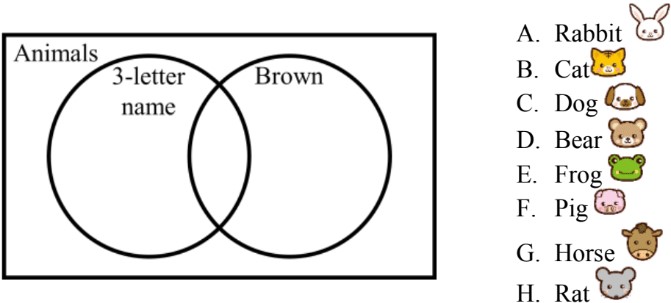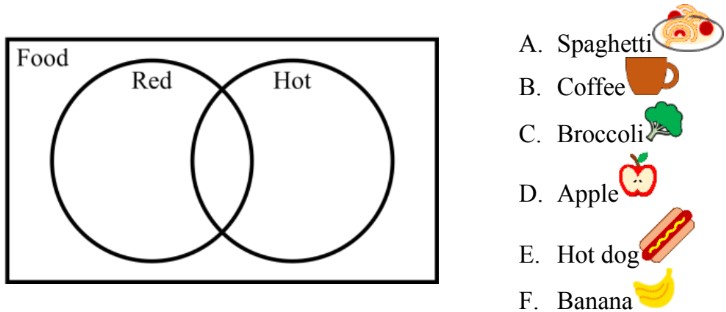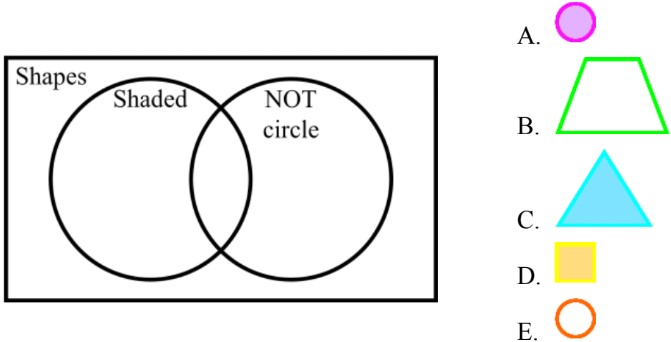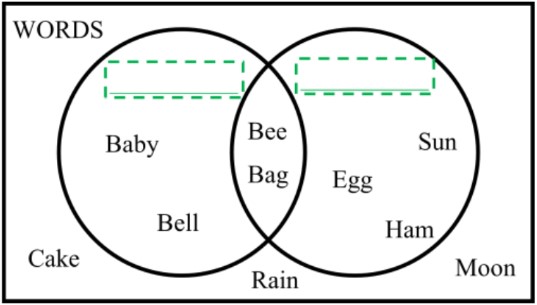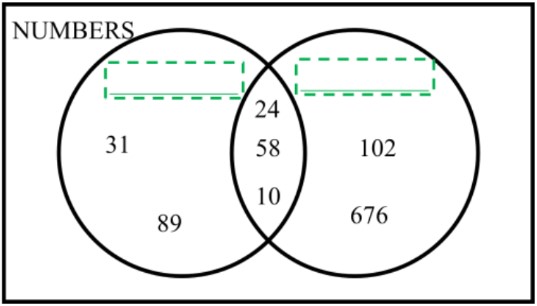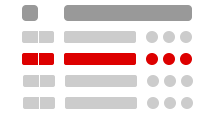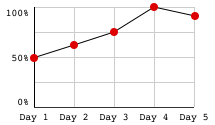In this lesson, we will learn:
- How to describe common characteristics/attributes in groups of objects
- What the regions of the Venn Diagram mean in order to sort objects by their attributes
- The vocabulary "AND", "OR", and "NOT" within the context of Venn Diagrams
Notes:
- Venn Diagrams organize data by sorting by characteristics ("attributes")
- Circles are used to group objects by these characteristics
- Objects inside the circle have the attribute
- Objects outside the circle do NOT have the attribute
- Objects with more than 1 attribute go into the overlapping part of attribute circles they belong to
- A large rectangle surrounds all circles and objects, it represents all the objects
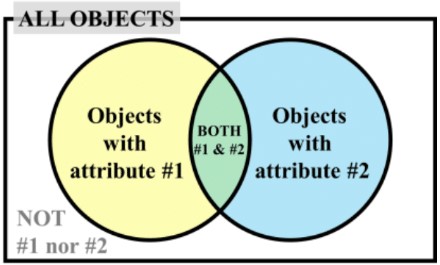
- Alphabet letters are given to objects to save space when sorting in the Venn diagram
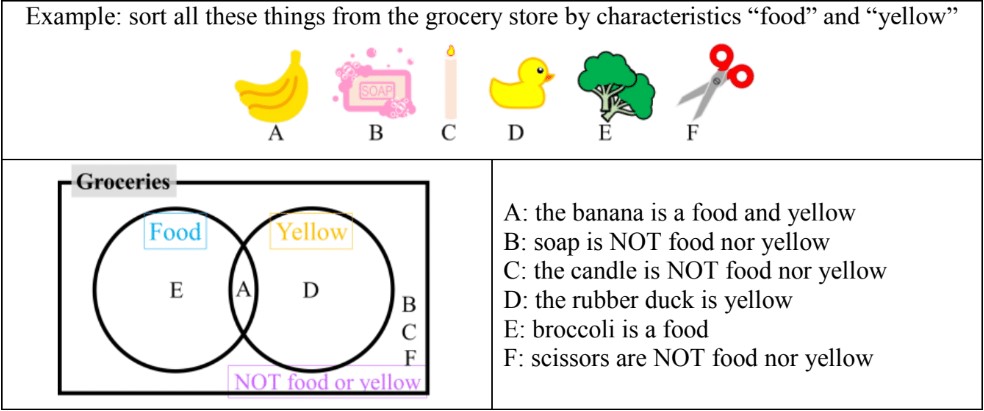
- The vocabulary words "AND", "OR", and "NOT" have special meanings for sorting:
- AND = means must have both attributes
- OR = means having either attribute
- NOT = means not including



